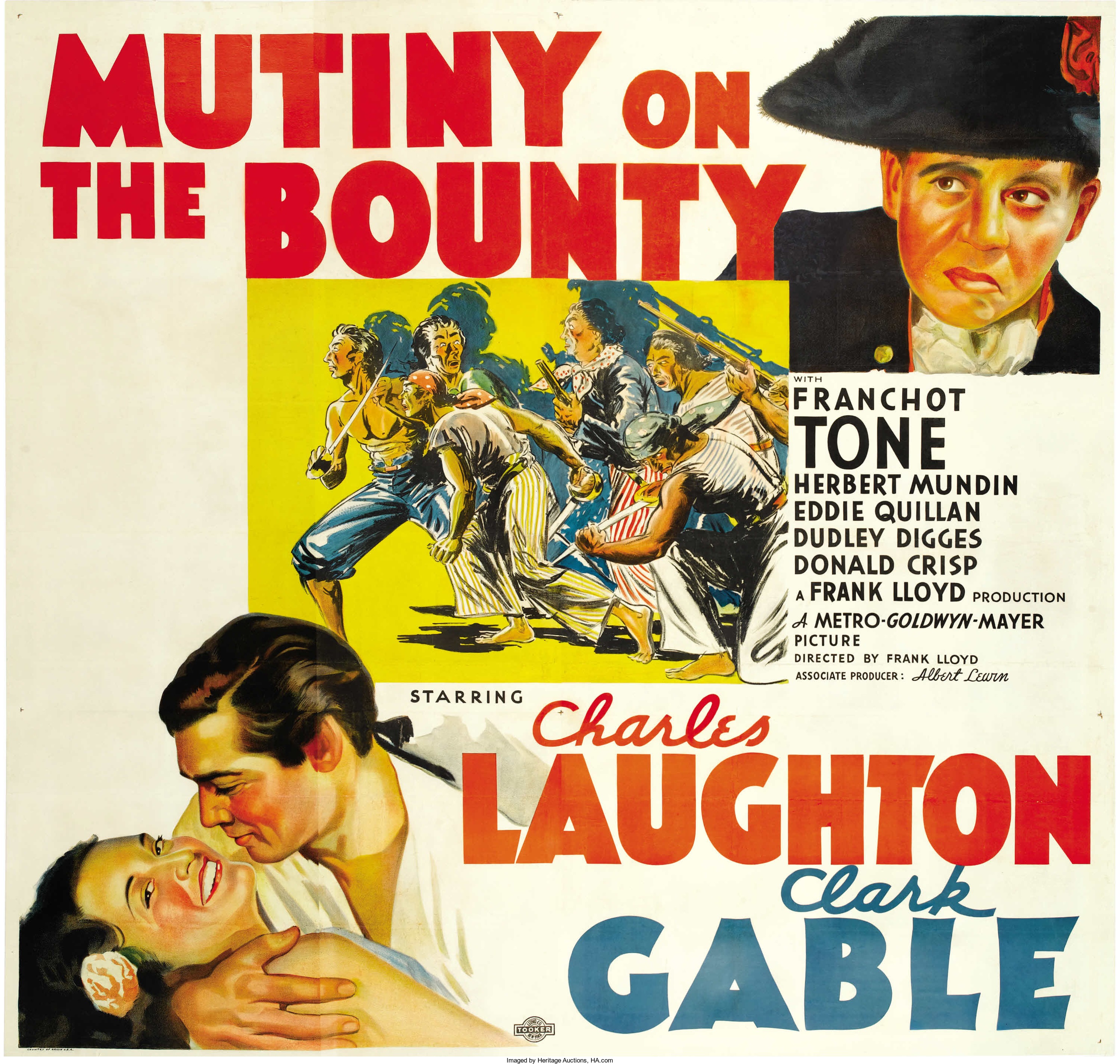
By Jim O’Neal
Most movie trivia buffs can generally rattle off the three films about the Mutiny on the Bounty and the co-stars in each:
- 1935 with Clark Gable (Fletcher Christian) and Charles Laughton (Captain William Bligh),
- 1962 with Marlon Brandon (Christian) and Trevor Howard (Bligh), and
- 1984 The Bounty with Mel Gibson and Anthony Hopkins (Bligh).
However, many are not aware of two earlier versions – the silent 1916 version, and 1933’s In the Wake of the Bounty with Errol Flynn in his film debut as Fletcher Christian.
They also may not know that for the 1935 version, Gable, Laughton and Franchot Tone were all nominated for Oscars in the best actor category (they lost to Victor McLaglen in The Informer). The Academy quickly introduced a new category, best supporting actor, to avoid a recurrence of three actors competing in the same film.
In all five movies, Captain Bligh is portrayed as a tyrant who pushes the crew mercilessly and metes out harsh punishment for trivial incidents. In response, Christian leads a mutiny of the crew and sets Captain Bligh and a handful of crew adrift on the sea.
In reality, half of the Bounty’s crew chose to stick with their captain, despite being cast to the sea in an open boat with inadequate rations. Good decision since they made out much better than the mutineers.
In one of the great feats in seafaring history, Bligh navigated the small boat 4,000 miles across the Pacific to the island of Timor. En route, Bligh produced such excellent charts and descriptions of the water that the Royal Navy relied heavily on them for decades.
Bligh received a hero’s welcome when he returned home and eventually retired as Vice Admiral of the Blue. As for the mutineers, some were captured on Tahiti and either died or were hanged when they got back to England. Those who fled to Pitcairn were mostly killed by each other or their uninhibited Polynesian wives.
It is not surprising the screenwriters took some liberties with the real narrative.
 Intelligent Collector blogger JIM O’NEAL is an avid collector and history buff. He is President and CEO of Frito-Lay International [retired] and earlier served as Chairman and CEO of PepsiCo Restaurants International [KFC Pizza Hut and Taco Bell].
Intelligent Collector blogger JIM O’NEAL is an avid collector and history buff. He is President and CEO of Frito-Lay International [retired] and earlier served as Chairman and CEO of PepsiCo Restaurants International [KFC Pizza Hut and Taco Bell].

